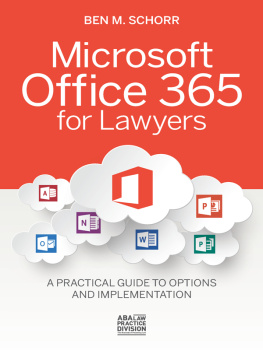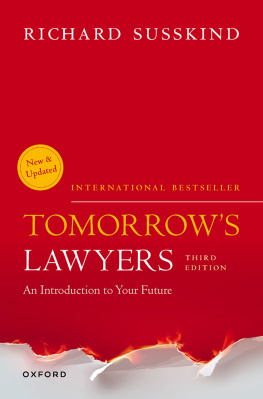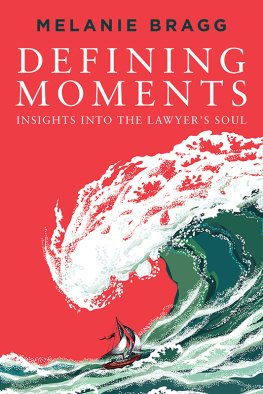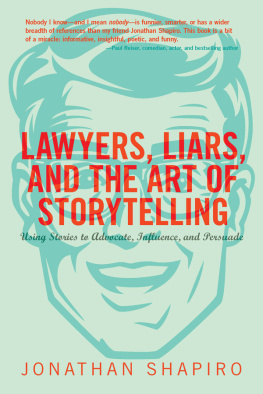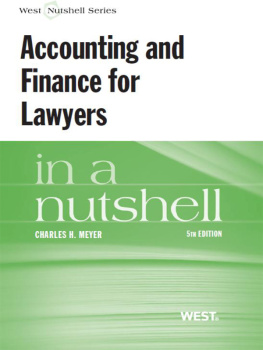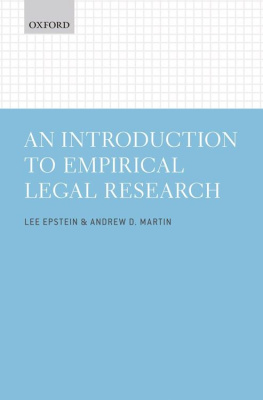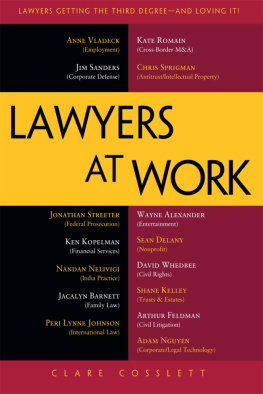STORYTELLING FOR LAWYERS

PHILIP N. MEYER


Oxford University Press is a department of the University of Oxford.
It furthers the Universitys objective of excellence in research, scholarship,
and education by publishing worldwide.
Oxford New York
Auckland Cape Town Dar es Salaam Hong Kong Karachi
Kuala Lumpur Madrid Melbourne Mexico City Nairobi
New Delhi Shanghai Taipei Toronto
With offices in
Argentina Austria Brazil Chile Czech Republic France Greece
Guatemala Hungary Italy Japan Poland Portugal Singapore
South Korea Switzerland Thailand Turkey Ukraine Vietnam
Oxford is a registered trademark of Oxford University Press
in the UK and certain other countries.
Published in the United States of America by
Oxford University Press
198 Madison Avenue, New York, NY 10016
Oxford University Press 2014
All rights reserved. No part of this publication may be reproduced, stored in a retrieval system, or transmitted, in any form or by any means, without the prior permission in writing of Oxford University Press, or as expressly permitted by law, by license, or under terms agreed with the appropriate reproduction rights organization. Inquiries concerning reproduction outside the scope of the above should be sent to the Rights Department, Oxford University Press, at the address above.
You must not circulate this work in any other form
and you must impose this same condition on any acquirer.
CIP data is on file at the Library of Congress.
ISBN 978-0-19-539663-8 (paperback)
ISBN 978-0-19-539662-1 (hardback)
1 3 5 7 9 8 6 4 2
Printed in the United States of America
on acid-free paper
For Anthony G. Amsterdam,
with gratitude and admiration.
For my family, with love.
Contents
FROM 2003 THROUGH 2008 I collaborated with Anthony G. Amsterdam preparing instructional materials for the Narrative Persuasion Institute. In this book I draw on these materials. I am grateful to Tony for his encouragement and support enabling me to write this book.
Storytelling for Lawyers
1
Introduction
Somewhere along the way one discovers that what one has
to tell is not nearly so telling as the telling itself.
HENRY MILLER, REFLECTIONS ON
WRITING, in THE WISDOM OF THE HEART
A good story and a well-formed argument are different
natural kinds. It has been claimed that one is a
refinement or abstraction from the other. But this must
be either false or true in only the most unenlightening
way. They function differently and the structure of a
well-formed logical argument differs radically from that of
a well-wrought story.
JEROME BRUNER, ACTUAL MINDS,
POSSIBLE WORLDS
Some years ago I practiced law. Most of my time was spent telling stories. I spoke to insurance adjusters and parole officers, to attorneys representing clients with adversarial interests, to government bureaucrats. And of course, I told stories in court. Typically, I told simple plot-driven, fact-based narratives. Of course, I tried to make my stories factually meticulous and accurate. But I constantly ordered and reordered events as I reconstructed the past to serve my clients purposes. Usually, I depicted my clients sympathetically, even when I did not believe this was their true character. When it served my purposes, I made the plots of my stories vivid and compelling. Sometimes, however, I flattened or obscured events, or sped up narrative time, or softened reality with intentional shifts from one genre into another. Other times, I slowed down time, focused on specific sequences of crucial images, or employed forms that heightened the impact of a story.
I learned to watch and listen to how my audience listened to me, and I would respond to their concerns, reshaping my stories to fit the shape of their imaginings. I recall the novelist John Irving instructing students at the Iowa Writers Workshop that effective storytelling requires ruthlessness and commitment to constructing a coherent and seamless world. It is apparent to me that successful lawyers are at ease with their storytelling roles of depicting The World According To in the battle of competing stories inside and outside the courtroom. And I now believe that many of the lessons I learned from creative writers of fiction and nonfiction are as important to successful law practice as any doctrine.
Make no mistake about itlawyers are storytellers. It is how we make our livings. In law practice effective storytelling is often outcome-determinative; sometimes it is literally a matter of life or death. Of course, storytelling practice in law is also unlike the work of other popular storytellers. Lawyers are ethical and truthful storytellers; imagination is informed, shaped, and limited by evidence. The lawyers voice and persona are different; the rules of, and constraints upon, formal legal storytelling are explicit and unlike those of other popular storytellers. Further, lawyers often do not tell complete stories, typically leaving it to others (judges, juries, decision makers) to complete the tales and inscribe codas of meaning. Nevertheless, as lawyers we have much to learn from studying the craft of storytelling and applying these lessons to our legal practice. As professional storytellers we can do our jobs better the more consciously we deploy the tools of the storytellers craft.
All arguments, at any level or in any type of practice, are built upon arrangements of the facts of a particular case. These facts are shaped into stories carefully fitted with legal rules and precedent. It is impossible to make any legal argument without telling some stories about the facts and about the law.
Unlike an analytical argument, the structure and internal components of a story are never pointed out or made explicit to a listener or reader. The verisimilitudeor lifelikenesscrucial to effective storytelling demands that the audience not be distracted by, or even be aware of, the technical craft that shapes the material, lest the storyteller risk breaking the storys spell over its audience.
Nevertheless, as storytellers have understood for millennia, there is a powerful and well-defined narrative architecture or structure in stories. There are clear principles that inform storytelling practice. This is no less true for the types of stories that lawyers tell. As Henry Miller observes, and as any effective litigation attorney knows, the truth of a story is in its telling. Likewise, a storys form is inseparable from its content; the two are inextricable.
But how does a lawyer tell a goodeffective, purposeful and persuasive, compelling and factually meticulous, and truthfulstory? What theory, techniques, and craft are helpful to legal storytellers? What, for example, are the components of an effective plot? How does a story turn on a narrative theme, and how does a theme inform a litigators theory of the case? What are the commonly recurring plots (the stock stories) employed in various types of law practice? What are relevant genres? Who are the characters in legal stories? How are these characters cast into specific roles? And how is character best depicted and developed? What is narrative time and how is it artfully and strategically employed and manipulated? Why does setting matter profoundly in some types of legal storytelling and not at all in others? What stylistic lessons might lawyers learn from other masterful popular storytellers, including novelists, journalists, and moviemakers?


